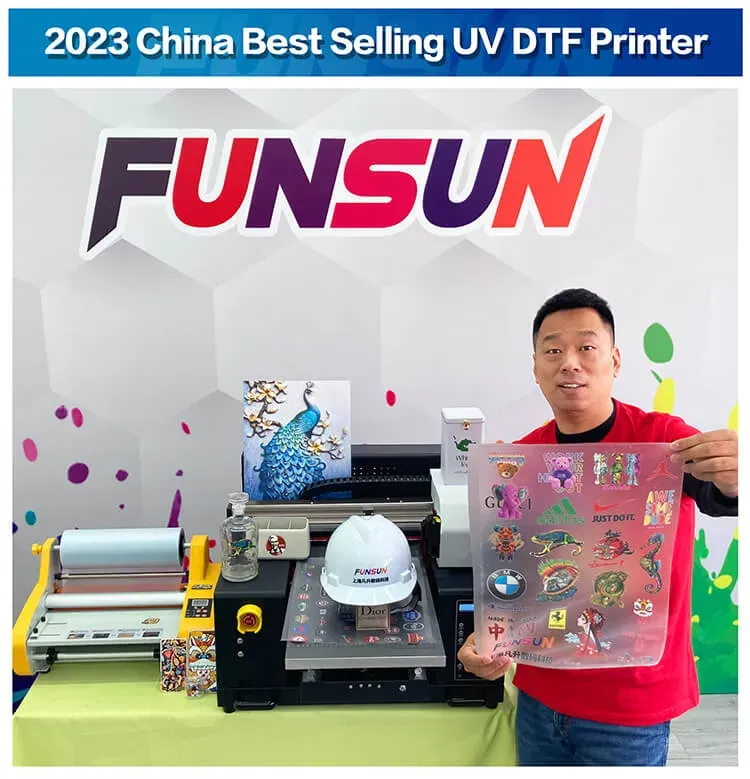UV DTF printing, or Ultra-Violet Direct to Film printing, stands at the forefront of modern graphic design technologies, marrying efficiency with high-quality results. This innovative printing technique is quickly becoming a sought-after choice among designers due to its many UV DTF advantages, including versatility in material usage and superior color depth. By adopting this sustainable printing technology, graphic designers can not only elevate their work but also meet the growing demand for eco-friendly practices in their projects. The benefits of UV DTF extend beyond just aesthetics; they encompass durability and a reduced waste footprint, making it a smart choice for conscious creatives. As we delve deeper into this versatile printing method, you’ll discover how UV DTF printing can revolutionize your artistic output and client satisfaction.
Often referred to as Ultra-Violet Direct to Film printing, this innovative method represents a game-changing advancement in the field of graphic design printing. It integrates the efficiency of direct-to-film techniques with the precision of ultraviolet curing technology, allowing designers to produce vibrant and durable prints across a multitude of substrates. Embracing such versatile printing methods not only enhances creative possibilities but also promotes sustainable practices within the industry. As graphic artists strive to deliver exceptional results, understanding the full scope of benefits associated with this approach becomes essential. In this article, we will explore the multifaceted advantages of this contemporary printing solution and how it aligns with modern design needs.
Understanding UV DTF Printing Technology
UV Direct to Film (DTF) printing is an innovative technique that merges direct-to-film capabilities with ultraviolet curing processes. This method involves using specialized UV-sensitive inks, which are applied to a film that subsequently undergoes a rapid curing process when exposed to UV light. As a result, graphic designers can achieve vibrant colors and sharp details, which make their creations stand out. By using UV DTF, designers can print on a diverse range of materials, including fabrics, metals, and plastics, thereby broadening their creative horizons and providing unlimited creative possibilities.
The significance of UV DTF extends beyond mere aesthetics; it also represents a shift towards more efficient production techniques. Traditional printing methods often involve lengthy processes and excessive waste. In contrast, UV DTF delivers fast turnaround times and reduces material waste, aligning with the industry’s focus on sustainability. This hybrid technology not only enhances productivity for graphic designers but also caters to an evolving demand for eco-friendly solutions in printing.
Frequently Asked Questions
What are the advantages of UV DTF printing for graphic design?
UV DTF printing offers numerous advantages for graphic design, including superior color quality, versatility on various substrates, and exceptional durability. This innovative technology allows for vibrant prints that resist fading and scratching, making it ideal for a range of projects, from promotional items to signage.
How does UV DTF printing support sustainable printing technology?
UV DTF printing supports sustainable practices by utilizing low VOC inks, reducing harmful emissions compared to traditional solvent-based inks. Additionally, its ability to produce shorter runs minimizes waste, aligning with eco-friendly initiatives in the graphic design industry.
What makes UV DTF printing a versatile printing method?
The versatility of UV DTF printing lies in its capability to print on various materials, including plastics, metals, and fabrics. This flexibility opens up creative possibilities for graphic designers, enabling them to experiment with different substrates and finishes for their projects.
What is the benefit of quick turnaround times in UV DTF printing?
Quick turnaround times in UV DTF printing are essential in the fast-paced graphic design industry. The rapid curing process allows designers to produce high-quality prints swiftly, meeting client deadlines and fostering satisfaction and long-term relationships.
How does UV DTF printing enhance the durability of printed products?
UV DTF printing enhances durability by using UV-cured inks that create resilient prints resistant to fading, scratching, and environmental wear. This durability ensures that printed products maintain their quality over time, making them suitable for both indoor and outdoor use.
What unique design features can graphic designers achieve with UV DTF printing?
Graphic designers can employ UV DTF printing to achieve unique design features, such as glossy finishes and matte textures. The technology supports various embellishments and effects, allowing designers to create standout products that reflect their clients’ visions.
| Key Advantage | Description |
|---|---|
| Versatility | Can print on various substrates including plastics, metals, wood, and fabrics, allowing for creative experimentation. |
| Superior Color Quality | Delivers vibrant, true-to-life colors that don’t bleed, maintaining sharp details and lines. |
| Durability | Prints are resistant to fading, scratching, and outdoor exposure, ensuring longevity. |
| Eco-Friendly Options | Low VOC inks support sustainable practices, appealing to eco-conscious clients. |
| Reduced Waste | Minimizes overproduction and excess materials, aligning with sustainability principles. |
| Quick Turnaround | Rapid curing process allows for faster production times compared to traditional methods. |
| Enhanced Design Features | Offers various effects like glossy finishes and unique embellishments for creative projects. |
Summary
UV DTF printing is a revolutionary technique that brings numerous advantages to graphic designers. This method combines Direct to Film technology with UV curing, allowing for high-quality, durable prints on a wide range of materials. With its superior color vibrancy, and eco-friendly inks, UV DTF printing not only meets the growing demand for sustainability in design but also enhances the creative possibilities for designers. By understanding and adopting UV DTF printing, graphic designers can streamline their workflows, reduce waste, and respond quickly to client needs, ultimately delivering exceptional results that elevate their work and satisfy their customers.



